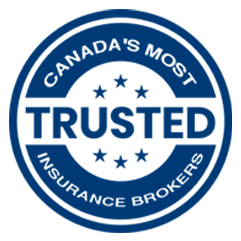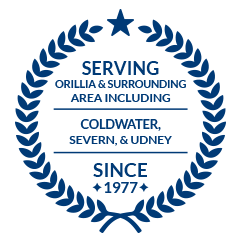9 Safety Tips for Driving at Night
Driving at night can be much more dangerous than driving in the daytime. There are many reasons for this, not only because it’s dark out, but also because of the way your pupils dilate to the glaring oncoming lights, or the difficulty of driving when you are tired. With that being said, things simply look different in the dark, and it can be difficult to avoid the risks that are all around you. These problems can cause a slower reaction time, or you may not be able to perceive things like obstacles as clearly on the road.
There are many other challenges when driving at night, no matter if you’re a new driver or a veteran. Here are some tips that can help you reduce the risk of getting into an accident while on the road at night.
1. Drive defensively
If you know how to drive defensively, then it’s best to use this knowledge when out at night. You should also never get behind the wheel if you have been drinking, of course. Accidents caused by drinking and driving are four times more likely after dark, compared to during the day. However, this could also be an incentive to enroll in a defensive driving course, since what you learn could help you avoid a fatal collision.
2. Fight fatigue
Collisions due to drowsiness are more likely to occur between 12 midnight to 6 a.m. Make sure that if you are driving at night, between these hours, to put more effort into keeping yourself as alert as possible because there could be other sleepy drivers on the road. You can opt to have some caffeine or pull over at a rest stop to take a nap, or even stop there for the night.
There are a few other things you can try that other drivers have reported might help. For example, you can turn up the radio, roll down your windows for some fresh air, or talk or sing to yourself.
3. Make sure your view is clear
Having a dirty or damaged windshield can easily impair your vision, especially at night. In the evening, you can clearly see all of the dirt and grime that has accumulated over the days or months. Whether this is due to fingerprints, dust, bird poop, or salt, your visibility will be impacted by what is on your windshield. Before you leave at night, take extra time to clean off the outside of your windshield, and be sure that you have enough windshield fluid to last for the trip. If you find that your wipers aren’t doing the best job at cleaning your windshield off, it could be time to replace them.
Other than your windshield, make sure that your car’s lights are clear and that your mirrors are clean and properly aligned. If you see that your lights are foggy looking, you can use a headlight polishing kit so that they become clear again. You want to make sure that nothing is blocking or affecting your lights in any way.
4. Keep interior lights low
Having your dashboard lights, dash camera, or GPS devices on full brightness can quickly turn the cabin of your vehicle into a distraction zone. When you drive at night, make sure that you turn the brightness as low as possible. By dimming down these lights, you can minimize reflections on your windows and distractions for your eyes so that they will be able to focus and adjust on the dark roads in front of you.
5. Understand when to use high beams
Using your high beams is a very useful way to see things at night. They can help you increase your visibility from 45 meters to 90 meters. However, it’s important that you only use them when needed. You should only be using your high beams when you are on rural or open roads, or if you are driving a long distance behind another person. If you keep your high beams on all the time, you are blinding other drivers on the road when they come within close or medium range of your vehicle.
6. Drive slowly
Because of the low visibility and slower reaction speeds, you should opt to drive slower than you usually do when you are driving around at night. For instance, even though your headlights will shine up to 160 feet, you will need 190 feet to stop even if you are only going 60 km/h. You should be adjusting your speed in consideration of other situations like your visibility plus the weather and road conditions.
7. Stay alert for wildlife
Accidents involving deer or other wildlife typically happen at night and can be more common from October to January, depending on where you live. Using your high beams can help you, as they cause any animal’s eyes to glow. When you see them, you should slow down to a stop, instead of swerving, as this is the safest way to avoid an accident.
8. Get your vision checked
Another helpful thing to do regularly is to check your vision with an optometrist at least every year. As well, if you wear glasses, make sure that they are anti-reflective. As we age, glare can become more of a problem for us. Some people find that they need a different prescription during the night.
9. Test your lights
You should aim to regularly test and check all of your lights, including the low beams, high beams, the daytime running lights, your turn signals, and your brake lights. Be sure to always turn your headlights on in the dark to stay visible. Not only that, but be certain to also keep them on when you are driving in adverse weather conditions such as rain, snow, and hail.
For more information, call Ron Johnston Insurance today for all of your insurance services at 705-325-6200.
- June 2025
- May 2025
- April 2025
- March 2025
- February 2025
- January 2025
- December 2024
- November 2024
- October 2024
- September 2024
- August 2024
- July 2024
- June 2024
- May 2024
- April 2024
- March 2024
- February 2024
- January 2024
- December 2023
- November 2023
- October 2023
- September 2023
- August 2023
- July 2023
- June 2023
- May 2023
- April 2023
- March 2023
- February 2023
- January 2023
- November 2022
- October 2022
- September 2022
- August 2022
- July 2022
- June 2022
- May 2022
- November 2021
- January 2018
- December 2017
- November 2017
- October 2017
- September 2017
- August 2017
- July 2017
- May 2017
- April 2017


